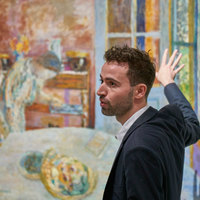
Daniel Zamani
Since January 2018, I work as curator at the Museum Barberini in Potsdam, where I am in charge of our extensive collection of Impressionist and Post-Impressionist painting. In addition, I regularly organize large-scale international loan exhibitions in the area of 19th- and 20th-century painting. Forthcoming exhibitions include monographic shows on Maurice de Vlaminck (2024) and Camille Pissarro (2025) as well as the exhibitions "Impressionism in Germany: Max Liebermann and his Time" (2026) and "Symphonies of Color: Signac and Neo-Impressionism" (2026).
Shows I curated or co-curated include:
*Surrealism and Magic: Enchanted Modernity (2022)
*The Shape of Freedom: International Abstraction after 1945 (2022)
*Monet: Places (2020)
*Color and Light: The Neo-Impressionist Henri-Edmond Cross (2018/19)
*Matisse - Bonnard: 'Long Live Painting'(2017/18).
I hold BA, M.Phil and PhD degrees in History of Art & Architecture from Trinity College at the University of Cambridge and an additional MA in Curatorial Studies from the École du Louvre in Paris. My PhD thesis was funded by a research scholarship from the Arts and Humanities Research Council of Great Britain as well as a Trinity College Graduate Studentship award. Currently, my broader curatorial and research interests lie in modern & contemporary art, with a specific expertise in French 19th-century painting; Dada, Surrealism and their legacies in post-war Europe and the Americas; and the influence of occultism, magic and heterodox spirituality on modern art and literature.
I have contributed several articles to the "International Encyclopedia of Surrealism" (2018), am a co-editor of the volumes "Surrealism, Occultism and Politics: In Search of the Marvellous" (2017) and "Visions of Enchantment: Occultism, Magic and Visual Culture" (2018) as well as a regular contributor to the "Allgemeines Künstlerlexikon", including entries on Claude Monet, Samuel Palmer and Auguste Rodin. I have also extensively published in a wide range of exhibition catalogues, always with a focus on 19th- and 20th-century art in Europe and the Americas.
https://danielzamani.academia.edu/
https://www.instagram.com/qratorial/?hl=en
Phone: 00491744654082
Shows I curated or co-curated include:
*Surrealism and Magic: Enchanted Modernity (2022)
*The Shape of Freedom: International Abstraction after 1945 (2022)
*Monet: Places (2020)
*Color and Light: The Neo-Impressionist Henri-Edmond Cross (2018/19)
*Matisse - Bonnard: 'Long Live Painting'(2017/18).
I hold BA, M.Phil and PhD degrees in History of Art & Architecture from Trinity College at the University of Cambridge and an additional MA in Curatorial Studies from the École du Louvre in Paris. My PhD thesis was funded by a research scholarship from the Arts and Humanities Research Council of Great Britain as well as a Trinity College Graduate Studentship award. Currently, my broader curatorial and research interests lie in modern & contemporary art, with a specific expertise in French 19th-century painting; Dada, Surrealism and their legacies in post-war Europe and the Americas; and the influence of occultism, magic and heterodox spirituality on modern art and literature.
I have contributed several articles to the "International Encyclopedia of Surrealism" (2018), am a co-editor of the volumes "Surrealism, Occultism and Politics: In Search of the Marvellous" (2017) and "Visions of Enchantment: Occultism, Magic and Visual Culture" (2018) as well as a regular contributor to the "Allgemeines Künstlerlexikon", including entries on Claude Monet, Samuel Palmer and Auguste Rodin. I have also extensively published in a wide range of exhibition catalogues, always with a focus on 19th- and 20th-century art in Europe and the Americas.
https://danielzamani.academia.edu/
https://www.instagram.com/qratorial/?hl=en
Phone: 00491744654082
less
Related Authors
David Seamon
Kansas State University
Renata Holod
University of Pennsylvania
Laurajane Smith
The Australian National University
Ara H. Merjian
New York University
Olga Palagia
National & Kapodistrian University of Athens
Neil Silberman
University of Massachusetts Amherst
Christiane Gruber
University of Michigan
Esther Solomon (Εσθήρ Σολομών)
University of Ioannina/Greece
Alice Isabella Sullivan
Tufts University
Rodney Harrison
University College London

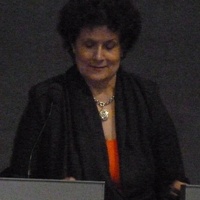
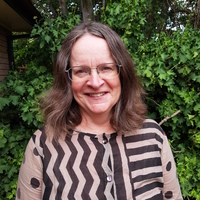

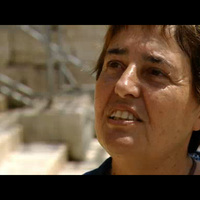
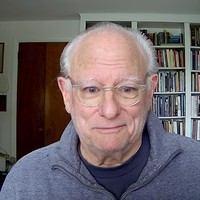

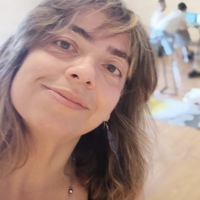


Uploads
Exhibitions by Daniel Zamani
The Second World War marked a turning point in the development of modern painting. Both in the US and in Western Europe, a younger generation of artists turned their backs on the dominant styles of the interwar period: Instead of figurative representation or geometric abstraction, painters in the orbit of Abstract Expressionism in the US and Art Informel in Western Europe pursued a radically impulsive approach to form, color, and material. As an expression of individual freedom, the spontaneous painterly gesture gained symbolic significance. Large-scale color-field paintings created a meditative space for ruminating the fundamental questions of human existence. The exhibition The Shape of Freedom examines the creative interplay between Abstract Expressionism and Art Informel in transatlantic exchange and dialogue, from the mid-1940s to the end of the Cold War. It includes more than ninety works by around fifty artists, amongst them Sam Francis, Helen Frankenthaler, K. O. Götz, Lee Krasner, Georges Mathieu, Joan Mitchell, Ernst-Wilhelm Nay, Barnett Newman, Jackson Pollock, Judit Reigl, Mark Rothko, and Clyfford Still. The over thirty international lenders include the Centre Pompidou in Paris, the Tate Modern in London, the Museo nacional Thyssen-Bornemisza in Madrid, the Whitney Museum of American Art in New York, the Museum Frieder Burda in Baden-Baden, and the Peggy Guggenheim Collection in Venice. The exhibition is organized by the Museum Barberini, Potsdam, and the Albertina Modern, Vienna, with generous support from the Fondation Gandur pour l’Art, Genève.
Like no other 20th-century movement, Surrealism was keenly inspired by tropes of magic, myth and the occult. In their engagement with the irrational and the unconscious, numerous of its members looked to magic as a poetic and deeply philosophical discourse, related to both arcane knowledge and individual self-empowerment. Over the past two decades, various studies have considerably expanded our appreciation of magic as a key aspect of the activity of the Surrealist group. In their works, the artists associated with the movement heavily drew on esoteric symbols and cultivated the image of the artist as an alchemist, magician, and visionary.
This exhibition explores the myriad ways, in which magic and the occult informed the development of Surrealism in international perspective, tracing its artistic trajectory from the “metaphysical paintings” of Giorgio de Chirico through to the politically contentious climate of the postwar years.
Amongst the many fascinating artists included in the exhibition are Victor Brauner, Leonora Carrington, Salvador Dalí, Paul Delvaux, Maya Deren, Max Ernst, Leonor Fini, René Magritte, Roberto Matta, Wolfgang Paalen, Kay Sage, Kurt Seligmann, Yves Tanguy, Dorothea Tanning, and Remedios Varo.
PhD Thesis by Daniel Zamani
Adding to the recently growing scholarship in this field, notably Patrick Lepetit’s "Le Surréalisme: parcours souterrain" (2012) and Tessel Bauduin’s "Surrealism and the Occult" (2014), the present study provides the first substantial analysis of the interplay between occultism and medievalism in what I regard as the three major reflections of Breton’s interest in this area: firstly, his 1928 work "Nadja", whose turn to courtly and alchemical themes heralded Breton’s more overt turn to esoteric themes and firmly cemented his ethereal vision of woman as a gateway to the spiritual; secondly, his 1945 novel "Arcane 17" which further dramatized Breton’s interest in hermetic philosophy and championed the medieval fairy-woman Melusina as the central protagonist in the experimental creation of a new, and empowering mythology of the modern; and, finally, his 1957 study "L’Art magique", which extensively discussed the historical links between enchantment and artistic creation and in whose iconographic programme the art of the late Middle Ages play a pivotal role.
Fully contextualising these case-studies within the ‘long’ history of the surrealist movement, from its beginnings in the 1920s through to the post-war period, I demonstrate that Breton embraced an emphatically mythologised vision of the Middle Ages, consistently drawing on iconic signifiers of the period in a powerful critique of modern disenchantment. In doing so, my aim is not only to uncover an aspect of the ‘occultation of Surrealism’ that has been consistently side-lined and neglected, but to also more generally contribute to our appreciation of the movement’s sources and genealogy. Further, I hope that this thesis will contribute to a better understanding of the surrealists’ interest in the occult as a domain that went far beyond a purely poetic dimension, but was inextricably linked to Breton’s unwavering faith in the possibility of total social and cultural transformation – an ideal for which the esoteric and specifically alchemical interest in constant metamorphosis and renewal offered a powerful symbolic blueprint.
Books by Daniel Zamani
The essays in this volume have been selected from papers presented at a major international conference at the University of Cambridge in 2014. It presents work by some of the leading scholars in Western Esotericism, including Antoine Faivre, M.E. Warlick and Deanna Petherbridge. Visions of Enchantment attests to the vibrant role that magic and the occult play in cutting-edge research across a wide variety of the arts and humanities today.
The primary objective of this volume is to explore the relationship between occultism and Surrealism, and hence to revisit the reductive views of Surrealism’s occultism as mere foolishness, unimportant or incidental. Specifically, the anthology aims to explore the reception and appropriation of occult thought, motifs, tropes and techniques by artists associated with the surrealist movement in Europe and the Americas, from the 1920s to the 1960s.
Its central focus is the specific use of occultism as a site of political and social resistance, ideological contestation, subversion and revolution; in other words, the surrealist use of occultism will be viewed vis-à-vis Surrealism’s counter-cultural politics and its aspiration to transform the world poetically and socially. Attention will be paid to the ways occultism was implicated in surrealist discourses on identity, gender, sexuality, utopianism and radicalism, and the extent to which this engagement was appropriated in different geographical contexts by artists and groups affiliated or in dialogue with Surrealism. Finally, the volume will bring together an excellent selection of international Surrealism-specialists, both established scholars and promising young talent, whose expertise will assure a collection of thorough and specific case-studies, bridged by the common thread of surrealist occultism as site of political contestation and the introduction by the editors.
Presented in its usual impeccable design and high quality format, it offers eight papers selected from the conference ‘Charming Intentions: Occultism, Magic and the History of Art’, held at the Department of History of Art at the University of Cambridge on 3-4 December 2012.
From the depiction of astrology in medieval manuscript illumination, to Renaissance magic stones, Tantric fertility rites, Surrealist painting and the influence of witchcraft on 20th-century American experimental films, this issue aims to attest the place of esoteric themes as a flourishing field in current art-historical research and to the formative influence which esoteric currents have exerted on Western and non-Western material and visual culture.
Contributors include Imma Ramos, Monika Winiarczyk, Dr Judith Noble, Dr Liliana Leopardi, Shandra Lamaute, Lisa Hanstein, Alexandra Marracini and Daniel Zamani.""
Articles and Catalogue Chapters by Daniel Zamani
The Second World War marked a turning point in the development of modern painting. Both in the US and in Western Europe, a younger generation of artists turned their backs on the dominant styles of the interwar period: Instead of figurative representation or geometric abstraction, painters in the orbit of Abstract Expressionism in the US and Art Informel in Western Europe pursued a radically impulsive approach to form, color, and material. As an expression of individual freedom, the spontaneous painterly gesture gained symbolic significance. Large-scale color-field paintings created a meditative space for ruminating the fundamental questions of human existence. The exhibition The Shape of Freedom examines the creative interplay between Abstract Expressionism and Art Informel in transatlantic exchange and dialogue, from the mid-1940s to the end of the Cold War. It includes more than ninety works by around fifty artists, amongst them Sam Francis, Helen Frankenthaler, K. O. Götz, Lee Krasner, Georges Mathieu, Joan Mitchell, Ernst-Wilhelm Nay, Barnett Newman, Jackson Pollock, Judit Reigl, Mark Rothko, and Clyfford Still. The over thirty international lenders include the Centre Pompidou in Paris, the Tate Modern in London, the Museo nacional Thyssen-Bornemisza in Madrid, the Whitney Museum of American Art in New York, the Museum Frieder Burda in Baden-Baden, and the Peggy Guggenheim Collection in Venice. The exhibition is organized by the Museum Barberini, Potsdam, and the Albertina Modern, Vienna, with generous support from the Fondation Gandur pour l’Art, Genève.
Like no other 20th-century movement, Surrealism was keenly inspired by tropes of magic, myth and the occult. In their engagement with the irrational and the unconscious, numerous of its members looked to magic as a poetic and deeply philosophical discourse, related to both arcane knowledge and individual self-empowerment. Over the past two decades, various studies have considerably expanded our appreciation of magic as a key aspect of the activity of the Surrealist group. In their works, the artists associated with the movement heavily drew on esoteric symbols and cultivated the image of the artist as an alchemist, magician, and visionary.
This exhibition explores the myriad ways, in which magic and the occult informed the development of Surrealism in international perspective, tracing its artistic trajectory from the “metaphysical paintings” of Giorgio de Chirico through to the politically contentious climate of the postwar years.
Amongst the many fascinating artists included in the exhibition are Victor Brauner, Leonora Carrington, Salvador Dalí, Paul Delvaux, Maya Deren, Max Ernst, Leonor Fini, René Magritte, Roberto Matta, Wolfgang Paalen, Kay Sage, Kurt Seligmann, Yves Tanguy, Dorothea Tanning, and Remedios Varo.
Adding to the recently growing scholarship in this field, notably Patrick Lepetit’s "Le Surréalisme: parcours souterrain" (2012) and Tessel Bauduin’s "Surrealism and the Occult" (2014), the present study provides the first substantial analysis of the interplay between occultism and medievalism in what I regard as the three major reflections of Breton’s interest in this area: firstly, his 1928 work "Nadja", whose turn to courtly and alchemical themes heralded Breton’s more overt turn to esoteric themes and firmly cemented his ethereal vision of woman as a gateway to the spiritual; secondly, his 1945 novel "Arcane 17" which further dramatized Breton’s interest in hermetic philosophy and championed the medieval fairy-woman Melusina as the central protagonist in the experimental creation of a new, and empowering mythology of the modern; and, finally, his 1957 study "L’Art magique", which extensively discussed the historical links between enchantment and artistic creation and in whose iconographic programme the art of the late Middle Ages play a pivotal role.
Fully contextualising these case-studies within the ‘long’ history of the surrealist movement, from its beginnings in the 1920s through to the post-war period, I demonstrate that Breton embraced an emphatically mythologised vision of the Middle Ages, consistently drawing on iconic signifiers of the period in a powerful critique of modern disenchantment. In doing so, my aim is not only to uncover an aspect of the ‘occultation of Surrealism’ that has been consistently side-lined and neglected, but to also more generally contribute to our appreciation of the movement’s sources and genealogy. Further, I hope that this thesis will contribute to a better understanding of the surrealists’ interest in the occult as a domain that went far beyond a purely poetic dimension, but was inextricably linked to Breton’s unwavering faith in the possibility of total social and cultural transformation – an ideal for which the esoteric and specifically alchemical interest in constant metamorphosis and renewal offered a powerful symbolic blueprint.
The essays in this volume have been selected from papers presented at a major international conference at the University of Cambridge in 2014. It presents work by some of the leading scholars in Western Esotericism, including Antoine Faivre, M.E. Warlick and Deanna Petherbridge. Visions of Enchantment attests to the vibrant role that magic and the occult play in cutting-edge research across a wide variety of the arts and humanities today.
The primary objective of this volume is to explore the relationship between occultism and Surrealism, and hence to revisit the reductive views of Surrealism’s occultism as mere foolishness, unimportant or incidental. Specifically, the anthology aims to explore the reception and appropriation of occult thought, motifs, tropes and techniques by artists associated with the surrealist movement in Europe and the Americas, from the 1920s to the 1960s.
Its central focus is the specific use of occultism as a site of political and social resistance, ideological contestation, subversion and revolution; in other words, the surrealist use of occultism will be viewed vis-à-vis Surrealism’s counter-cultural politics and its aspiration to transform the world poetically and socially. Attention will be paid to the ways occultism was implicated in surrealist discourses on identity, gender, sexuality, utopianism and radicalism, and the extent to which this engagement was appropriated in different geographical contexts by artists and groups affiliated or in dialogue with Surrealism. Finally, the volume will bring together an excellent selection of international Surrealism-specialists, both established scholars and promising young talent, whose expertise will assure a collection of thorough and specific case-studies, bridged by the common thread of surrealist occultism as site of political contestation and the introduction by the editors.
Presented in its usual impeccable design and high quality format, it offers eight papers selected from the conference ‘Charming Intentions: Occultism, Magic and the History of Art’, held at the Department of History of Art at the University of Cambridge on 3-4 December 2012.
From the depiction of astrology in medieval manuscript illumination, to Renaissance magic stones, Tantric fertility rites, Surrealist painting and the influence of witchcraft on 20th-century American experimental films, this issue aims to attest the place of esoteric themes as a flourishing field in current art-historical research and to the formative influence which esoteric currents have exerted on Western and non-Western material and visual culture.
Contributors include Imma Ramos, Monika Winiarczyk, Dr Judith Noble, Dr Liliana Leopardi, Shandra Lamaute, Lisa Hanstein, Alexandra Marracini and Daniel Zamani.""
It aims to investigate the multi-layered interconnections between occultism, spirituality and visual culture. In addition to five keynote lectures by distinguished academics, it will feature thirty-eight papers by senior academics as well as current and recent graduate students, all of which will explore symbolic, visual or material aspects of occultism and spirituality.
Topics range from Byzantine amulets and sorcery in Persianate manuscript painting to alchemical imagery, Surrealism and the use of occult and alchemical themes in modern and contemporary film, spectacle and performance. The papers thus cover a wide range of periods, geographic areas, media and methodologies. Whilst such a rich diversity of topics does not easily lend itself to strict categorisation and neat grouping, we have nonetheless tried to provide a thematic and chronological framework according to panels.
We hope that the conference will not only be a platform for the presentation of innovative research in this field, but also a vibrant and thought-provoking forum for discussion and exchange.